A growing number of schools worldwide are creating a specific type of multisensory environment that helps all students—but especially those with sensory processing challenges—control their environment and develop self-regulation skills so they’re able to learn more effectively.
A Snoezelen multisensory environment is a specially designed space that uses light, sound, touch, and other elements to create a calming and immersive sensory experience. First developed in the Netherlands many decades ago, these rooms are now used in schools, hospitals, therapy centers, airports, and other public spaces to give people a safe place to relax, explore, and engage their senses in a controlled environment.
Snoezelen rooms are especially helpful for students with autism or other sensory processing challenges. However, these rooms can benefit anyone who’s looking for a calming and stress-free environment, and research suggests they can help create better conditions for learning.
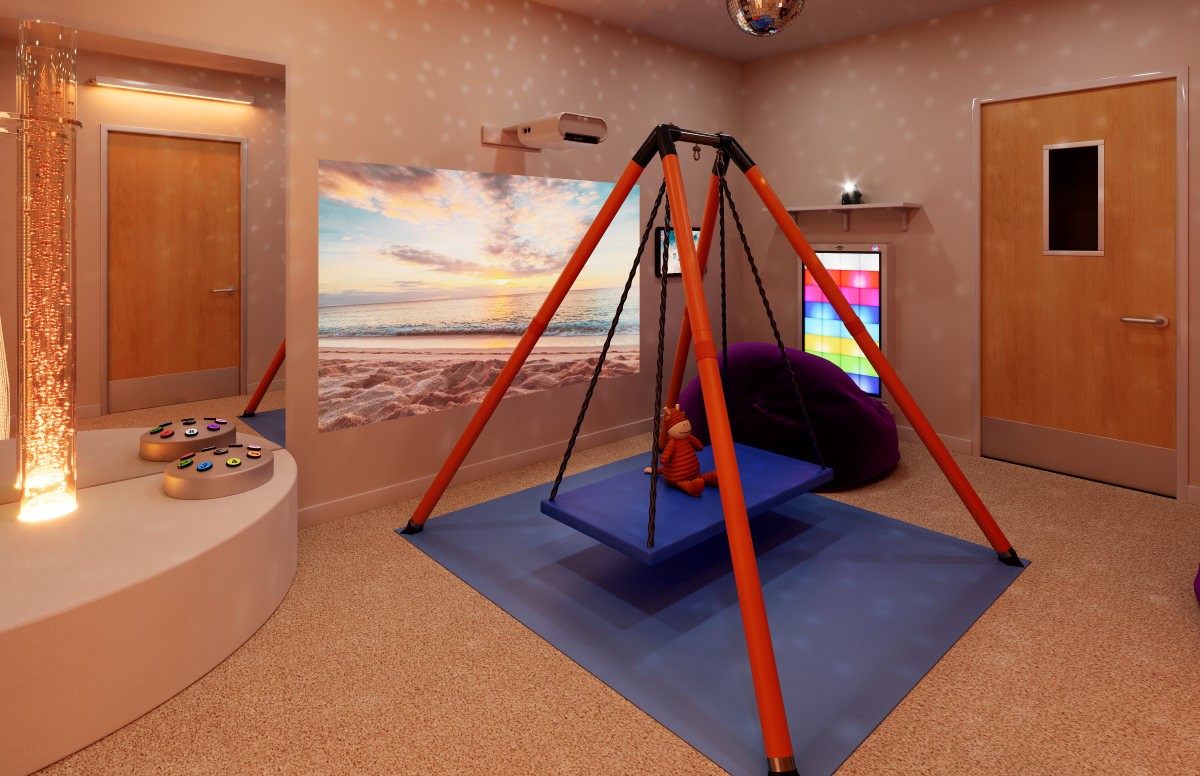
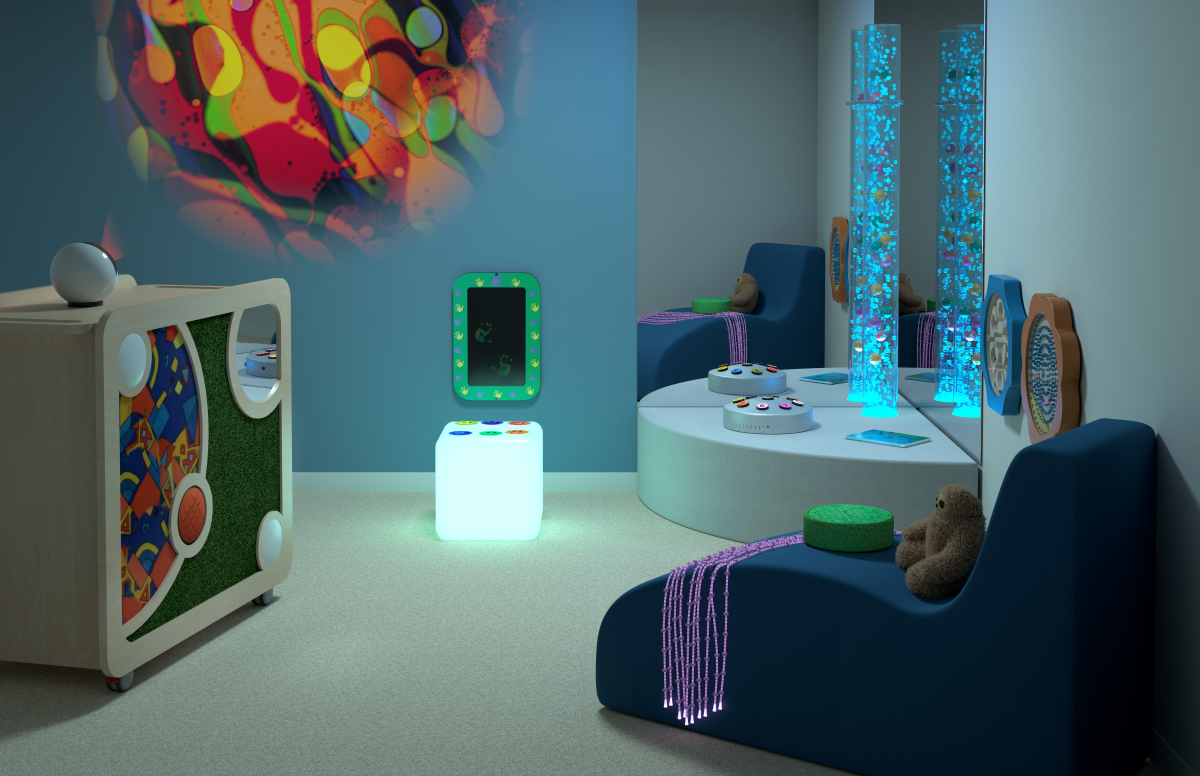
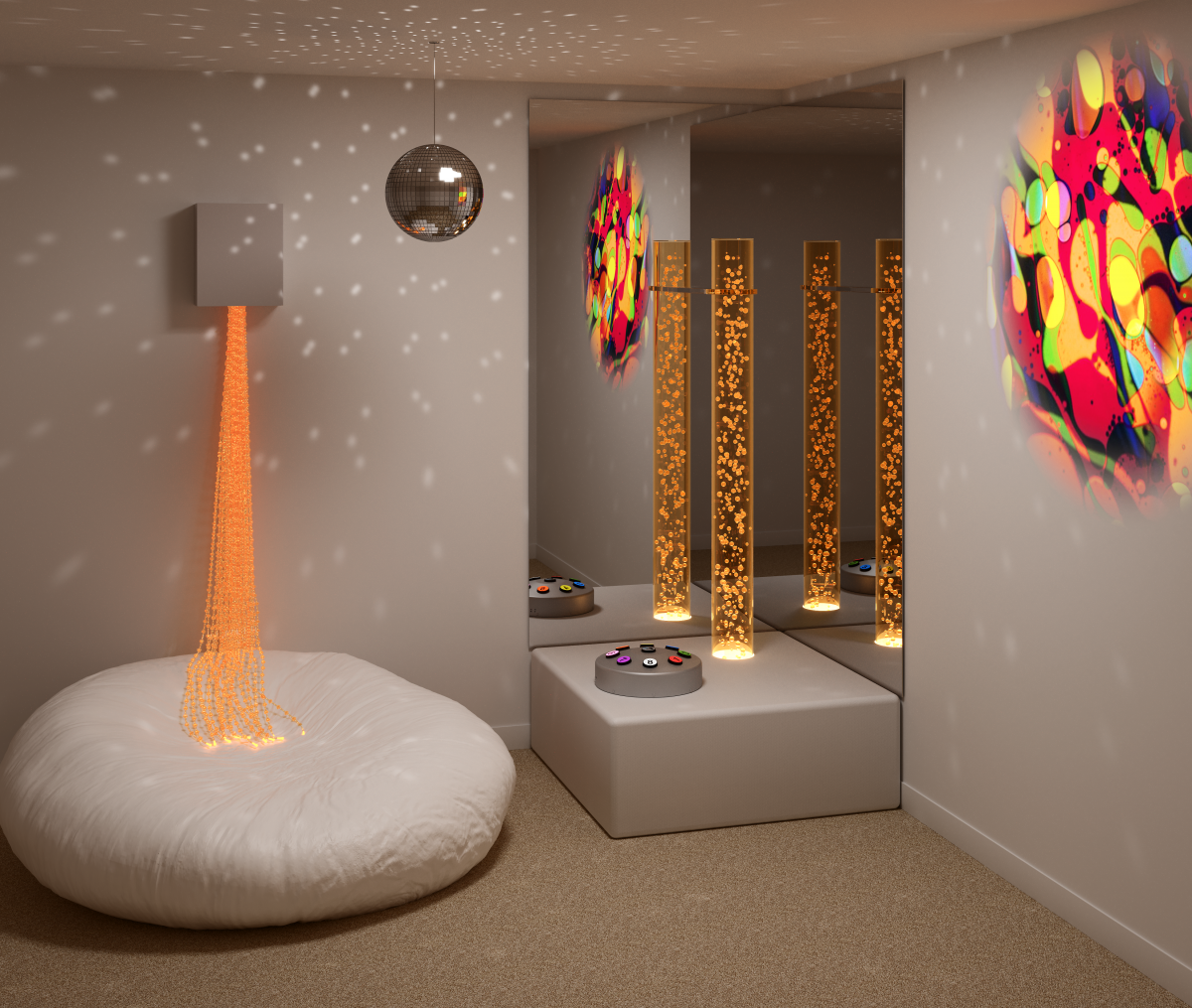
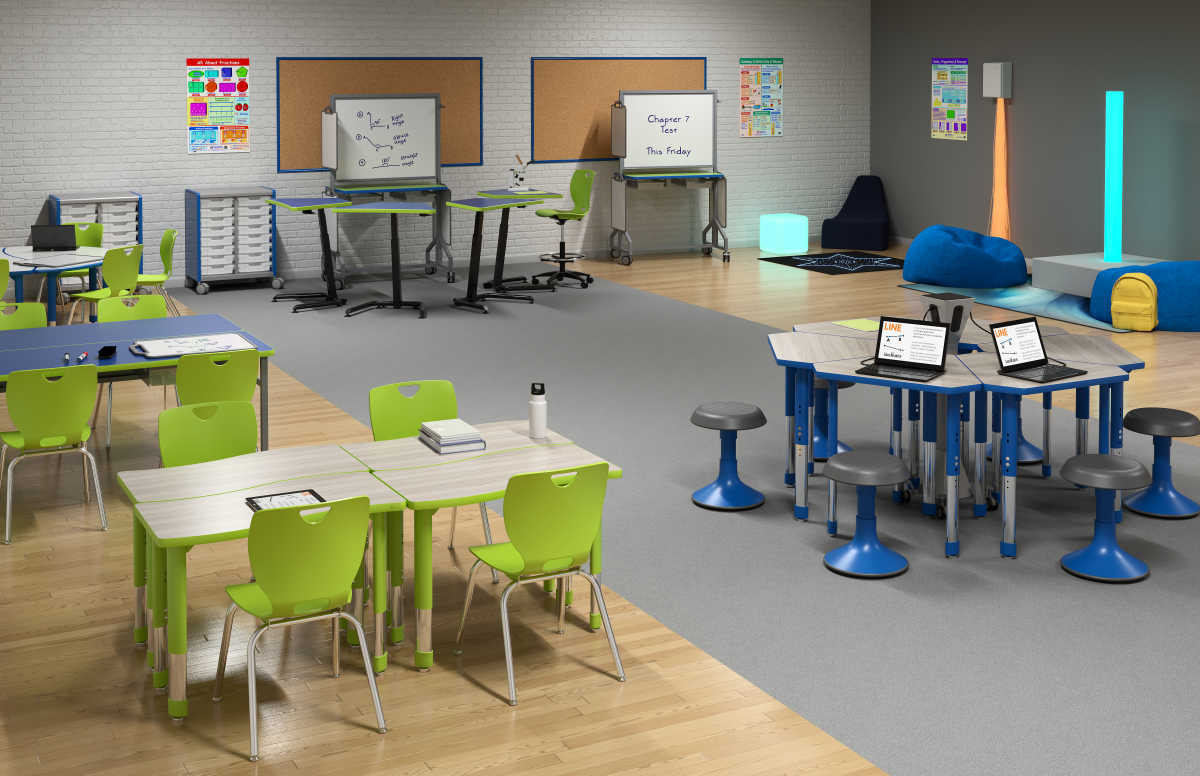
Many uses
Snoezelen rooms play a key role in creating learning environments that meet the needs of all students. They can be used to help students of all ages relax and focus on instruction. Many schools use them to support students with sensory processing sensitivity, providing a space for students to take sensory breaks or de-escalate during stressful moments. Occupational therapists use them for sensory integration therapy to treat children with sensory processing disorders. For younger children, Snoezelen rooms can be used to encourage sensory play and executive skills training—important aspects of child development.
A Snoezelen multisensory environment within the Cherish Center, a transitional school that serves special-needs students from four high schools within the United Independent School District in Texas, has proven to be so successful at calming students, de-escalating disruptive behavior, and getting students ready to learn that district officials plan to replicate the idea in every building.
Students “need to de-escalate their behavior sometimes,” says Executive Director of Special Education Laura De Los Santos. “They need strategies to help them cope.” The Snoezelen room at the Cherish Center has been highly effective in accomplishing this goal.
What a Snoezelen room looks like
A Snoezelen multisensory environment can be custom-designed and built to meet an individual school or district’s needs, and so each one is unique. However, these rooms typically share a number of characteristics, such as soft lighting, soothing sounds, tactile components, and other interactive features.
Some of the elements commonly found in these spaces include:
Three important benefits
Help students calm down when they’re anxious or overstimulated.
A Snoezelen room’s furnishings and equipment are specifically designed to create a soothing environment, which can help students relax and get their emotions in check.
Teach students independence and self-control.
One of the hallmarks of a Snoezelen room is the use of sensory inputs designed to promote choice and independence by giving children a sense of control.

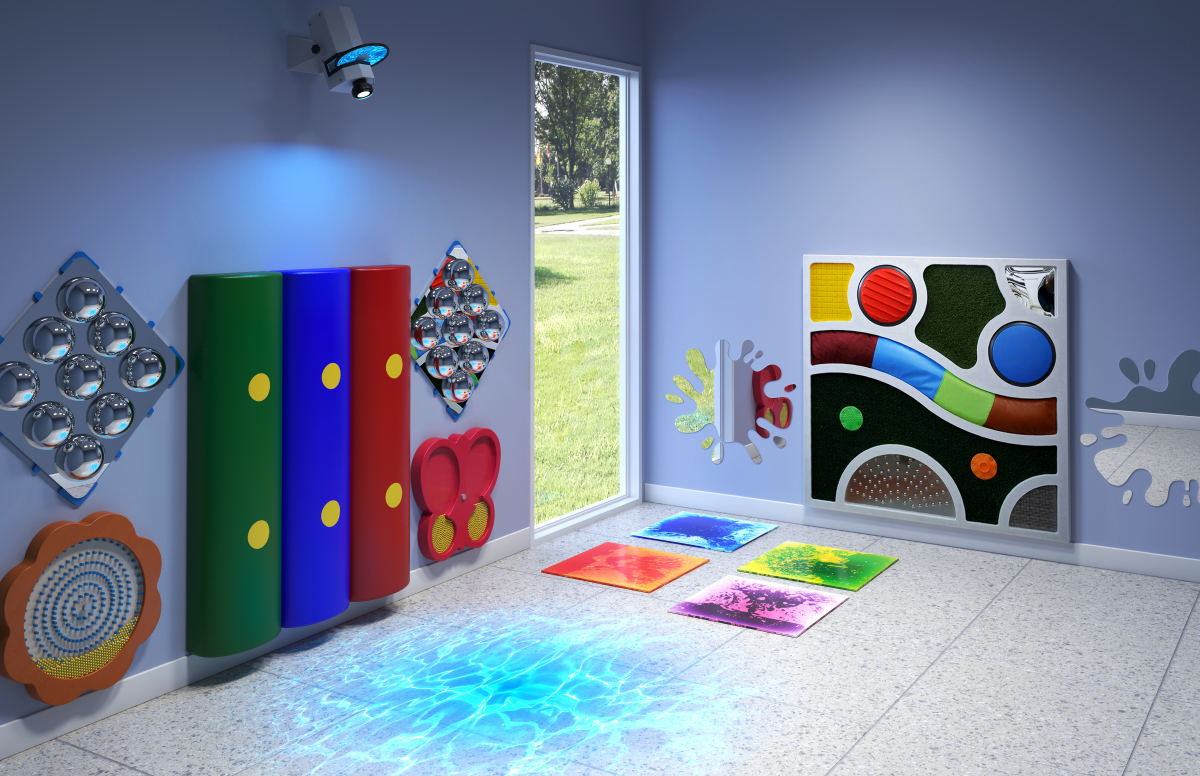
For instance, giant wall pads called Bumpas not only act as padding to keep students safe, they also turn the wall into a rainbow-colored xylophone that students can “play” by touching them—providing rich sensory feedback and stimulation. Another example is the use of LED furniture cubes that change color when students touch them. Elements like these help students feel in control of their environment, which promotes self-regulation skills.
Provide a safer and more effective alternative to seclusion rooms.
When children are feeling anxious, frustrated, or overstimulated, they can sometimes act out or exhibit unsafe behavior that compels educators to remove them from the learning environment until they can regulate their emotions.
A common solution is to bring students to an empty room until they’re calm enough to return to the classroom. But this practice often amplifies the anxiety or frustration that students are feeling—and it hasn’t been proven to reduce aggressive behaviors.
Snoezelen rooms provide a better alternative to seclusion or restraint. Purposefully designed and furnished to promote calming and self-regulation, Snoezelen rooms meet the very needs that seclusion rooms are supposed to address—but often don’t.
Proven results
Research shows that Snoezelen rooms have measurable benefits for students with sensory processing challenges and can help children learn more effectively.
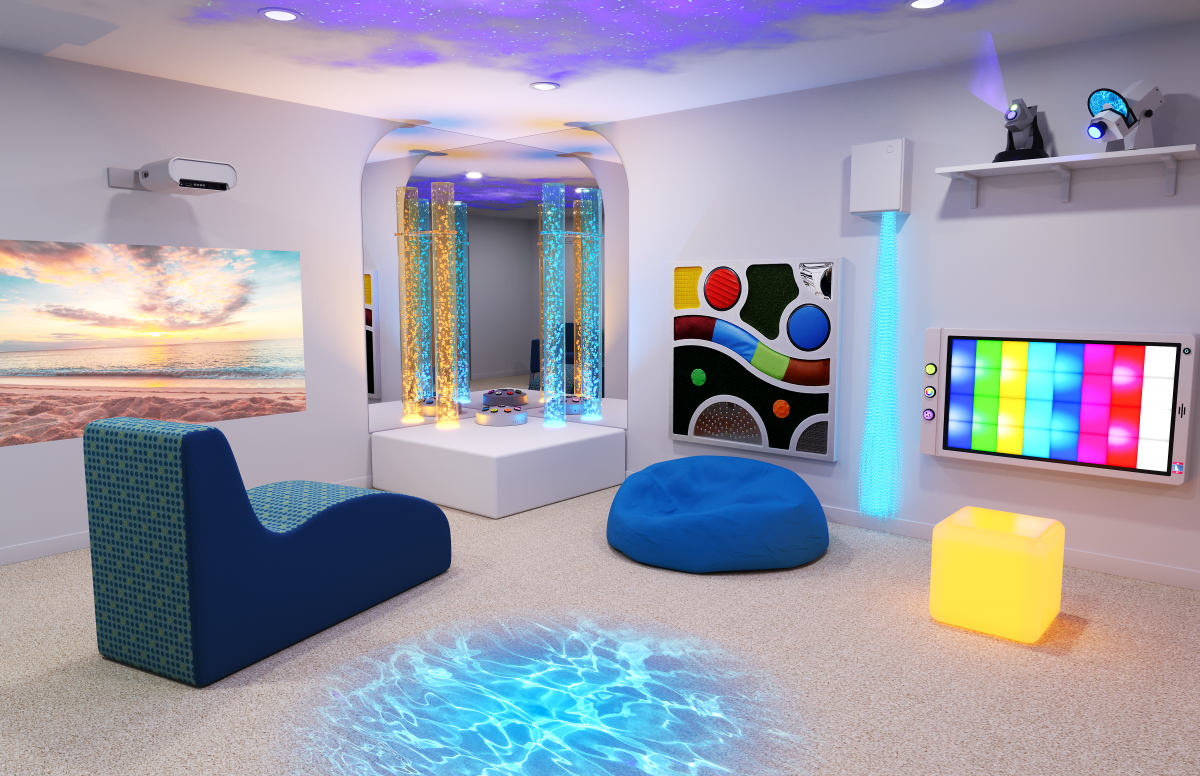
For instance, a U.K. study published in 2021 found that multisensory rooms that give autistic children control over their environment reduced their repetitive motor behaviors and increased their attention. “Our findings … suggest that providing control of sensory changes to autistic children may help create better conditions for learning,” the researchers wrote.
Paso Robles Joint Unified School District, a school system with about 6,000 students in California’s Central Coast region, is another proponent of Snoezelen rooms—and a multisensory environment at the district’s Marie Bauer Early Education Center is helping students overcome barriers to learning.
“We found that certain students, after spending time on the playground, had trouble regulating their bodies to sit still for regular instruction,” said Heather Wahlberg, the center’s director. “Along with our teachers and occupational therapists, we wanted to provide more support for those students and teach them self-regulation skills so they could learn alongside their peers in the classroom.”
The center’s Snoezelen room was completed in February 2025, and almost immediately, Wahlberg and her colleagues noticed a significant impact. “After only a few minutes in this room, students return to the classroom ready to learn,” she said. “We’re setting them up for success in the classroom.”
How to create an effective Snoezelen room
Identify goals.
Designing an effective Snoezelen room begins with understanding what you’re looking to accomplish with the space. For instance, who will be using the room, and for what purposes? If you’re targeting specific student populations, what are their particular sensory needs?
Partner with an experienced provider.
An experienced provider like School Specialty can help K-12 leaders identify their goals in creating a Snoezelen room and then design and build the perfect solution, choosing furnishings and equipment that support these goals while also fitting the needs of the physical space.
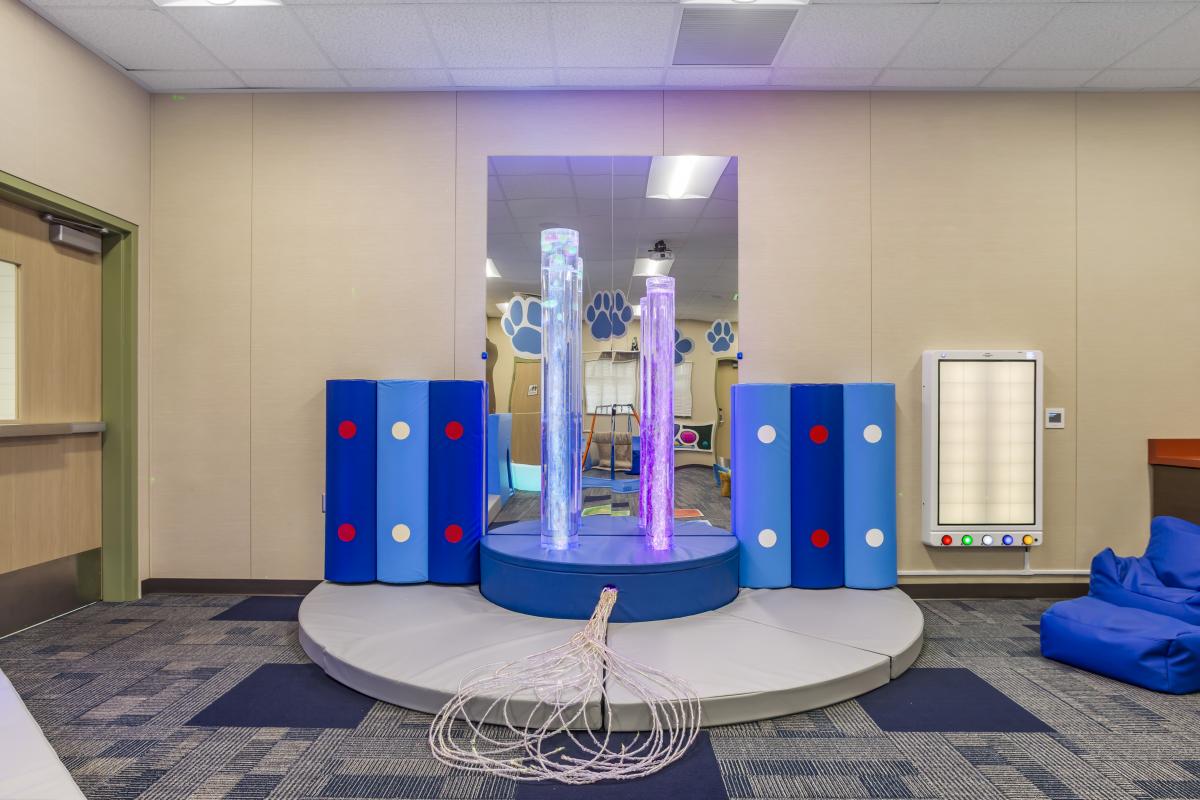

Both United ISD and Paso Robles turned to School Specialty for help in creating their Snoezelen multisensory environments. With a team of Snoezelen and sensory environment specialists on staff, School Specialty has the knowledge and experience needed to ensure the project’s success.
“Their ability to understand our mission and vision was second to none,” Wahlberg said of this team. “We realized we’d found a partner to help us turn our vision into a reality.”
Don’t forget about training.
To get the most value out of Snoezelen environments, teachers, therapists, and other staff should be well versed in how to guide students in the use of Snoezelen equipment. A key component in Paso Robles’ success was the professional learning that School Specialty experts provided to help district staff use the room effectively.
“A room is only as successful as the way we use it,” said Wahlberg. “We wanted to make sure our staff felt empowered in knowing when to use which types of tools and for what purpose.”
Learn more
To learn how School Specialty’s Projects By Design division can help you design, furnish, and equip non-Snoezelen multisensory environments that help position all students for success, go to www.schoolspecialty.com/projects-by-design today.